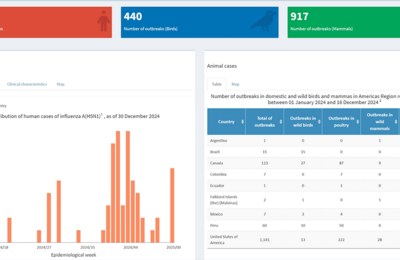
 For the first time in world
history, more than half the world's population lives in cities, and
that proportion is expected to grow to 70 percent by the year 2050.
Addressing the unique health challenges brought by this urbanization is
critical to ensuring the future health and well-being of the majority
of the world's people, experts said at the Pan American Health
Organization (PAHO) during the celebration of World Health Day 2010.
For the first time in world
history, more than half the world's population lives in cities, and
that proportion is expected to grow to 70 percent by the year 2050.
Addressing the unique health challenges brought by this urbanization is
critical to ensuring the future health and well-being of the majority
of the world's people, experts said at the Pan American Health
Organization (PAHO) during the celebration of World Health Day 2010.
On World Health Day, a call to join "the global movement to make cities healthier"
Washington, D.C., 7 April 2010 (PAHO)—For the first time in world
history, more than half the world's population lives in cities, and
that proportion is expected to grow to 70 percent by the year 2050.
Addressing the unique health challenges brought by this urbanization is critical to ensuring the future health and well-being of the majority of the world's people, experts said at the Pan American Health Organization (PAHO) today.
"Most people move to cities to improve their lives," said Dr. Mirta Roses, PAHO Director. "Yet urbanization—especially when it is rapid and unplanned—can have negative effects on human health and well-being. Rapid population growth puts pressure on basic services and makes it difficult for governments to meet people's needs. Urban slums and shantytowns increase people's exposure to environmental, social and security risks. Increased traffic creates hazards for drivers, passengers, and pedestrians alike. And modern urban living makes people more susceptible to chronic illnesses like heart disease and diabetes, as people become more sedentary and consume higher-calorie, processed foods and fewer fresh fruits and vegetables."
"As is so often true, all these problems have a greater impact on the poor, who are at higher risk for everything from violence and injuries, to communicable diseases such as tuberculosis and HIV/AIDS," said Dr. Roses.
The remarks were made during a panel discussion on World Health Day 2010, whose theme is urbanism and health. Dr. Roses called on people around the world to "join the global movement to make cities healthy."
Experts on the panel noted that the health challenges of urbanization are nowhere more pressing than in Latin America and the Caribbean, the world's most urbanized region, with three out of every four people living in urban areas.
The trend has already had a profound effect on health in the region. Chronic diseases such as heart disease, diabetes, and stroke have replaced infectious diseases as the leading causes of illness and death in virtually all the hemisphere's countries. Deaths and injuries due to violence and traffic accidents have risen dramatically. And as the recent earthquake in Haiti demonstrated, people living in densely populated, poorly constructed urban areas are at much greater risk during natural disasters.
At the same time, cities—with their rich human, social, economic and institutional resources—offer ample opportunities to solve such problems "through initiatives that mobilize these resources in a strategic way," said Dr. Roses.
Many such efforts are already under way throughout the Americas. They include:
- "Healthy settings" initiatives, in which municipalities, communities, schools, and workplaces work to improve their on-site environment and promote health among their residents or members.
- Urban planning that includes provisions for clean public spaces, basic water and sanitation services, efficient public transportation and traffic management, safe walking and cycling paths, and safe gathering places.
- Municipal laws and policies aimed at reducing the use of tobacco, alcohol and other drugs, encouraging more physical activity, and helping to "make the healthy choice the easy choice."
- Public policies aimed at reducing water, air and noise pollution, including greenhouse emissions and chemical exposures.
In a videotaped message, New York Mayor Michael Bloomberg cited his own city's success in improving urban health through public policies that ban smoking in public places (including restaurants and bars), eliminate trans fats and require calorie and fat content to be posted on menus in fast-food restaurants, promote low-salt foods, reduce violence and crime, expand parks and recreational programs, and make streets safer for cars, bikes, and pedestrians.
"In New York City, we've shown you can take steps to significantly improve the health of your citizens even as your cities continue to grow and grow," said Bloomberg. "In fact, today New Yorkers are living longer than ever, and living longer than the average American for the first time since World War II."
"When we look at the Americas, we see the future," said Nils Daulaire, Director of the Office of Global Health Affairs of the U.S. Department of Health and Human Services. "We see workable models and experiences that can serve for the rest of the world."
Dr. David Vlahov, Director of the Center for Urban Epidemiological Studies at the New York Academy of Medicine, noted that many policies and actions aimed at improving the urban environment and health are interrelated and can also affect the global environment.
Improving urban transportation systems, for example, can help reduce air pollution and boost physical activity while also reducing greenhouse emissions. This is particularly significant given that cities produce some 80 percent of the carbon dioxide in the atmosphere.
Marilyn Rice, PAHO's Senior Advisor on Health Promotion, said that, given good public policies, the creation of healthy cities was within reach. "Cities have the resources. It is a question of marshalling those resources and bringing people together from all walks of life."
Other highlights of PAHO's World Health Day 2010 observance included:
- A special PAHO recognition for the "Virginia Task Force One" search-and-rescue team and Fairfax County Fire Chief Ronald Mastin for the team's recovery and humanitarian efforts following the Jan. 12 earthquake in Haiti.
- The official launch in the Americas of the new One Million Safe Schools and Hospitals Campaign, announced by Ricardo Mena, Regional Coordinator (Americas) of the United Nations' International Strategy for Disaster Reduction (UNISDR).
- The launch of the PAHO-produced Spanish version of the book Environmental Health: From Global to Local, edited and presented by Howard Frumkin, Special Assistant to the Director of the U.S. Centers for Disease Control and Prevention (CDC).
For more information on World Health Day 2010 and related events, see:
- World Health Day 2010, PAHO site
- World Health Day 2010, WHO site
- "1,000 Cities, 1,000 Lives" campaign
- "Better City, Better Life," World Expo, Shanghai, May 1 — Oct. 31, 2010
- International Conference on Urban Health, Oct. 27-29, New York City
- WHO Global Forum on Urban Health, Nov. 15-17, Kobe, Japan
CONTACTS: Donna Eberwine-Villagran, tel. +1 202 974 3122, Knowledge Management and Communication Area, PAHO/WHO.



